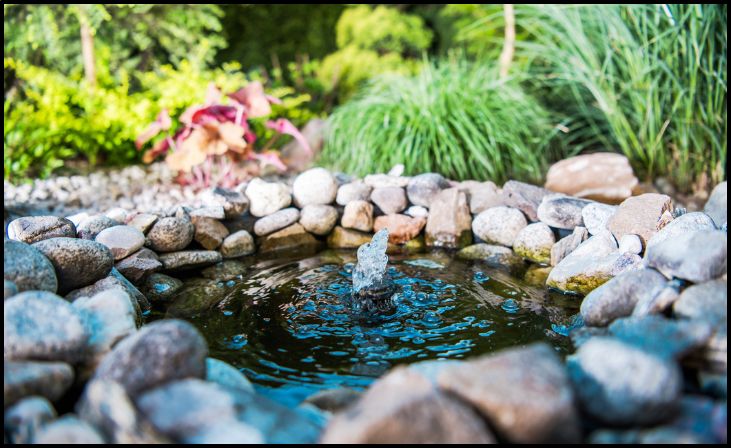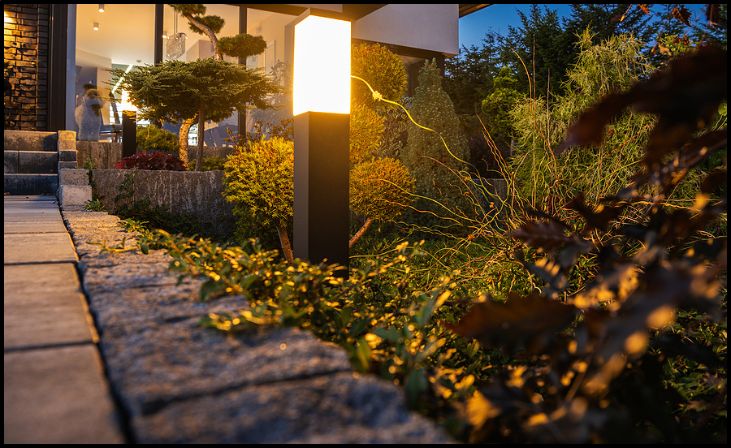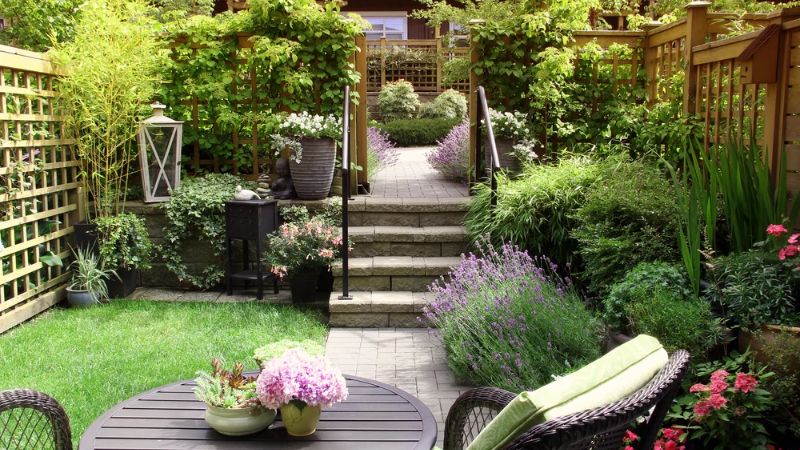Gardening is a fulfilling and therapeutic activity that not only enhances the beauty of your home but also promotes a healthier lifestyle. Whether you’re a seasoned gardener or a beginner, fresh and innovative design ideas can transform your garden into a personal paradise. Here are seven garden design ideas that will inspire you to get growing.
1. Create a Vertical Garden

Vertical gardens are perfect for those with limited space. They allow you to grow a variety of plants upwards, utilizing walls, fences, or specially designed structures. This method is particularly effective for growing herbs, succulents, and small vegetables. Vertical gardens can be as simple as a hanging planter system or as elaborate as a green wall with built-in irrigation. The visual impact of a lush, green vertical garden can be stunning, transforming a bland wall into a vibrant, living canvas.
2. Incorporate Raised Beds
Raised beds are a fantastic way to organize your garden, improve soil quality, and reduce back strain. By elevating the planting area, you can control the soil conditions more effectively, ensuring better drainage and preventing soil compaction. Raised beds also warm up faster in the spring, allowing for an earlier start to the growing season. They can be constructed from various materials such as wood, stone, or metal, and can be designed to fit any garden size or shape. Additionally, they add a neat, structured look to your garden, making it more aesthetically pleasing.
3. Design a Themed Garden
Themed gardens add a unique and personal touch to your outdoor space. Whether it’s a butterfly garden, a medicinal herb garden, or a zen garden, choosing a theme helps guide your plant selection and overall design. For instance, a butterfly garden would include nectar-rich flowers like coneflowers, milkweed, and asters to attract these beautiful insects. A zen garden, on the other hand, might focus on minimalist design with sand, rocks, and carefully placed plants like bamboo and bonsai. Themed gardens not only serve an aesthetic purpose but can also reflect your interests and passions.
4. Implement Water Features

Adding a water feature to your garden can create a serene and calming atmosphere. Water features such as fountains, ponds, or waterfalls introduce the soothing sound of flowing water, which can help mask noise pollution and provide a tranquil retreat. Ponds can also support a variety of wildlife, from fish to amphibians and beneficial insects. Even a small birdbath can attract local birds, enhancing the biodiversity of your garden. Water features can be designed to fit any space, from large ponds to compact, recirculating fountains, making them a versatile addition to your garden.
5. Utilize Edible Landscaping
Edible landscaping is a practical and attractive way to make the most of your garden space. By incorporating fruit-bearing trees, berry bushes, and vegetable plants into your landscape design, you can create a beautiful garden that also provides fresh produce. Edible plants can be mixed with ornamental ones to create visually appealing combinations. For example, colorful Swiss chard can be planted alongside flowers, and fruit trees can provide both shade and a bountiful harvest. This approach not only maximizes your garden’s productivity but also encourages sustainable living by reducing the need for store-bought produce.
6. Create a Wildlife-Friendly Garden
Designing a garden that attracts and supports wildlife can help create a more balanced and healthy ecosystem. Planting native species is key, as they are well-suited to the local climate and provide essential resources for local fauna. Include a variety of plants that offer food and shelter throughout the year. For example, dense shrubs provide nesting sites for birds, while flowering plants offer nectar for pollinators like bees and butterflies. Adding features such as birdhouses, bat boxes, and insect hotels can further encourage wildlife to take up residence in your garden. A wildlife-friendly garden not only benefits the environment but also provides endless opportunities for observing nature up close.
7. Use Pathways and Lighting

Pathways and lighting are crucial elements that enhance both the functionality and aesthetic appeal of your garden. Well-designed pathways guide visitors through the garden, highlighting key areas and protecting your plants from foot traffic. Materials for pathways can range from gravel and mulch to pavers and bricks, each offering different textures and styles. Lighting, on the other hand, extends the usability of your garden into the evening hours. Solar-powered lights, string lights, or lanterns can create a magical atmosphere, illuminating pathways, plants, and architectural features. Proper lighting also improves safety, preventing trips and falls as you navigate your garden at night.
Embracing these garden design ideas can transform your outdoor space into a beautiful and productive haven. Whether you’re looking to create a tranquil retreat, a productive vegetable garden, or a wildlife sanctuary, these concepts will inspire you to get growing and make the most of your garden. Happy gardening!
